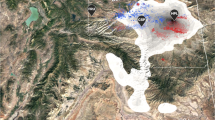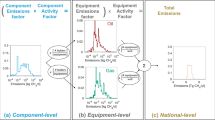Abstract
THE PRODUCTION OF LIGHT OILS FROM NATURAL GAS. NATURAL gas may be of two distinct types—dry gas or wet gas. The former consists essentially of methane, with practically no other members of the paraffin series, the latter being composed of methane with varying amounts of ethane, pentane, hexane, and heptane, and certain dilutants such as nitrogen, carbon dioxide, carbon monoxide, sulphuretted hydrogen, and sometimes helium. Dry gas is normally associated with coal or decomposing vegetable matter and is rarely met with in the presence of petroleum; wet gas, on the other hand, is essentially the gas present in oil pools, either in the free state or dissolved in the oil under pressure.
This is a preview of subscription content, access via your institution
Access options
Subscribe to this journal
Receive 51 print issues and online access
$199.00 per year
only $3.90 per issue
Buy this article
- Purchase on SpringerLink
- Instant access to full article PDF
Prices may be subject to local taxes which are calculated during checkout
Similar content being viewed by others
References
"Natural Gas Gasoline in 1920," by E. G. Sievers . Min. Res. Unit. States, 1920, Part II., pp. 289–300. (Unit. States Geol. Survey.)
Rights and permissions
About this article
Cite this article
MILNER, H. Natural Gas Gasoline. Nature 110, 791 (1922). https://doi.org/10.1038/110791a0
Issue date:
DOI: https://doi.org/10.1038/110791a0



